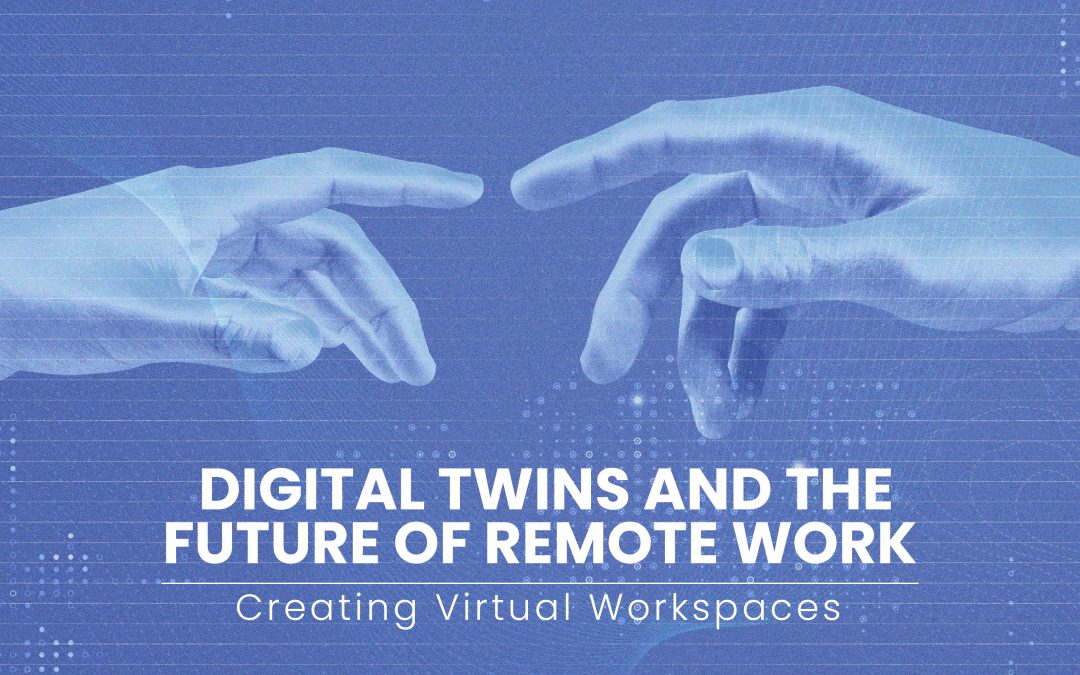In recent years, the rapid evolution of technology has significantly transformed how we work, and one of the most promising innovations at the forefront of this transformation is the concept of digital twins. Traditionally used in manufacturing and engineering to create virtual replicas of physical assets, digital twins are now poised to revolutionize the future of remote work by enabling the creation of immersive and interactive virtual workspaces.
What Are Digital Twins?
A digital twin is a virtual model that accurately replicates a physical object, system, or environment. It uses real-time data to mirror its physical counterpart, allowing users to monitor, analyze, and simulate various scenarios in a risk-free virtual environment. Initially, digital twins were primarily utilized in industries such as aerospace, automotive, and construction, where they provided insights into the performance and maintenance of complex systems. However, the technology’s potential has expanded far beyond these traditional applications, especially in the context of remote work.
The Rise of Virtual Workspaces
As remote work becomes increasingly prevalent, the demand for more engaging and efficient ways to collaborate remotely has grown. Traditional video conferencing and project management tools, while effective, often fall short in replicating the dynamic and collaborative nature of in-person work environments. This is where digital twins come into play, offering the potential to create virtual workspaces that closely mimic real-world offices, meeting rooms, and collaborative spaces.
How Digital Twins Are Shaping Remote Work
1. Enhanced Collaboration and Communication
One of the biggest challenges of remote work is maintaining effective communication and collaboration among team members. Digital twins can bridge this gap by providing a virtual environment where employees can interact with each other and with digital replicas of shared workspaces.
For example, teams can meet in a digital twin of their office, interact with 3D models of their projects, and even simulate different scenarios to solve problems in real time. This level of immersion fosters a sense of presence and collaboration that traditional tools cannot match.
Advantages:
- Realistic Interactions: Digital twins enable more natural and realistic interactions, helping teams feel connected even when working remotely.
- Visual Collaboration: Teams can visualize and manipulate 3D models of projects, which enhances understanding and decision-making.
- Global Collaboration: Employees from different geographical locations can collaborate in real-time, breaking down barriers imposed by time zones and physical distance.
2. Improved Productivity and Efficiency
By replicating physical workspaces, digital twins enable remote workers to engage with their environment in a more intuitive and natural way. Instead of navigating through multiple apps and tools, employees can interact with a single, cohesive virtual workspace that integrates all the necessary resources and information.
Advantages:
- Seamless Integration: Digital twins provide a unified workspace, reducing the need to switch between multiple tools, which saves time and minimizes distractions.
- Task Automation: Routine tasks can be automated within the virtual workspace, allowing employees to focus on more critical and creative aspects of their work.
- Resource Optimization: Managers can monitor and optimize resource allocation in real-time, ensuring that projects are completed efficiently.
3. Training and Skill Development
Digital twins also offer significant advantages in training and skill development. Organizations can create virtual replicas of their equipment, processes, or even entire facilities to train employees in a risk-free environment.
For example, new employees can practice using complex machinery or navigating challenging scenarios without the potential for costly mistakes. This immersive training experience is particularly valuable in industries where hands-on experience is crucial for success.
Advantages:
- Safe Learning Environment: Employees can learn and practice in a virtual environment without the risk of causing damage or incurring costs associated with mistakes.
- Customizable Training Scenarios: Training programs can be tailored to specific roles, allowing employees to develop the skills most relevant to their positions.
- Accelerated Learning: The immersive nature of digital twins enhances retention and understanding, reducing the time required to master new skills.
4. Real-Time Data and Decision-Making
One of the key benefits of digital twins is their ability to provide real-time data and analytics. In a remote work setting, this means that employees can access up-to-date information about their virtual workspace, monitor performance metrics, and make informed decisions based on real-time insights.
For example, managers can track the progress of a project in the digital twin, identify potential bottlenecks, and adjust resources accordingly. This level of visibility and control is essential for maintaining productivity and ensuring the success of remote teams.
Advantages:
- Informed Decisions: Real-time data allows employees and managers to make informed decisions quickly, improving responsiveness and agility.
- Proactive Problem-Solving: Potential issues can be identified and addressed before they escalate, thanks to continuous monitoring and analysis.
- Performance Tracking: Managers can track individual and team performance, providing valuable insights that can be used to optimize workflows and improve outcomes.
The Future of Remote Work with Digital Twins
As digital twin technology continues to evolve, its impact on remote work will only grow. In the future, we can expect to see more sophisticated virtual workspaces that are fully customizable, allowing organizations to create environments that align with their unique needs and culture. These spaces will be equipped with advanced AI and machine learning capabilities, enabling them to adapt to the needs of their users and provide personalized experiences.
Furthermore, as virtual and augmented reality technologies mature, digital twins will become even more immersive, blurring the lines between the physical and digital worlds. Imagine a remote work scenario where employees can virtually walk through a factory, interact with digital replicas of machinery, and collaborate with colleagues as if they were physically present. This level of immersion will redefine the remote work experience and open up new possibilities for innovation and collaboration.
Conclusion
Digital twins are set to play a pivotal role in the future of remote work by creating virtual workspaces that offer the same level of interaction, collaboration, and efficiency as physical offices. As organizations continue to embrace remote work, digital twins will provide the tools needed to bridge the gap between physical and virtual work environments, enabling teams to work together seamlessly, no matter where they are in the world.
By investing in digital twin technology, businesses can unlock new levels of productivity, innovation, and employee engagement, positioning themselves at the forefront of the remote work revolution. The future of work is digital, and digital twins are leading the way












